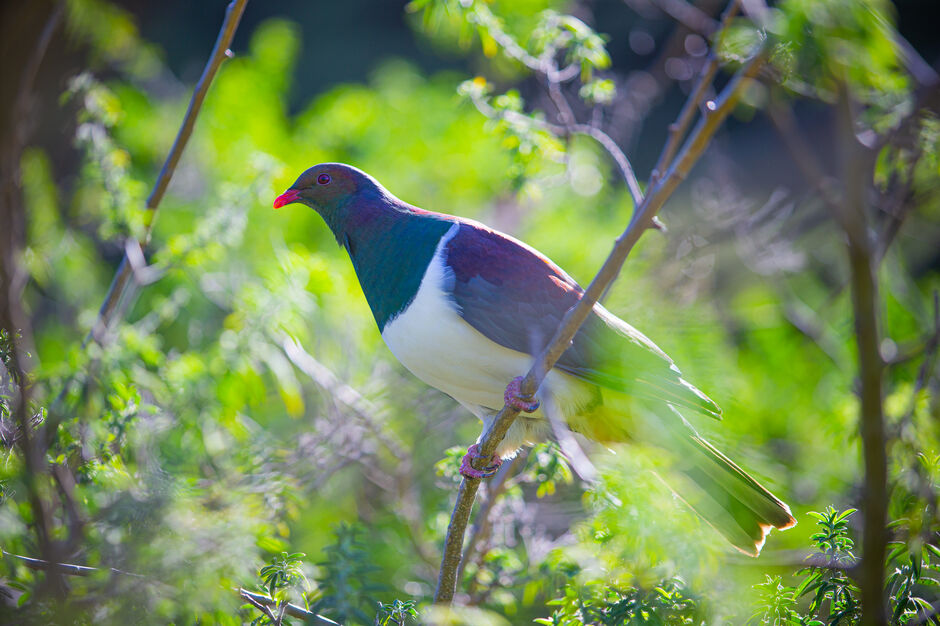-
Popular places to visit
Popular things to do
Helpful tips
Here's a few useful links to help with planning your trip to Aotearoa New Zealand.
-



A spectacular sanctuary for New Zealand’s native birds – and lucky visitors.
Kāpiti Island is one of New Zealand’s most accessible nature reserves. Lying just 5 km off the coast north of Wellington, this thriving sanctuary is home to rare and endangered native birds, many of which have vanished from the mainland. With Kāpiti Island Nature Tours, you’ll enjoy exclusive access to the island, allowing you to spend your time as you wish—whether walking, swimming, taking a guided tour, or simply birdwatching.


Kāpiti Island might be small, but it has a big job to do. As a predator-free sanctuary, it plays an essential role in preserving Aotearoa New Zealand’s most endangered bird species. Birds you’re likely to encounter include the kākā, a large parrot; the kākāriki, a red-crowned parakeet; and the tīeke (saddleback), a striking wattlebird with a red patch on its back resembling a saddle, among many others. Also, keep an eye out for Takahē, a large flightless bird beloved of New Zealanders because it was once thought to be extinct.
The original forest was dominated by huge rata and podocarps such as matai and miro. Most of these trees were burnt or felled during in the mid-nineteenth century to clear the land for farming, but pockets matai and miro still remain in the deep gullies escaped the fires. Today, as the forest regenerates, much of the island is covered in kohekohe, tawa and kanuka. Some plants, such as karo, have been introduced to provide a valuable food source for nectar-eating birds.


There are plenty of coastal or forest walks around the northern section of the island. If you’re feeling adventurous, take the Trig Track or the Wilkinson Track up to the 500-metre summit to take in the stunning panoramic views.
A wide range of guided tours are offered by Kāpiti Island Nature Tours(opens in new window), a family business owned by the Barrett clan, who have lived on the island for eight generations. There’s also the option to spend the night in a lodge or go glamping at the Barretts’ property at the northern end of the island. Be ready for a deafening dawn chorus.


To help protect the island’s predator-free status, access to the island is through Kāpiti Island Nature Tours. All ferries depart in the morning, returning at midday and in the evening.
Kāpiti Island is a popular year-round destination, but booking in advance is recommended during the peak season (December to February).
There are visitor shelters and toilets on the island. You’ll need to bring your lunch and drinking water, wear sturdy footwear, and warm clothing, including a waterproof jacket.
Please help care for New Zealand’s wildlife by observing the following:
© 2025 Warner Bros. Ent. and Legendary. All Rights Reserved.

The Tiaki Promise(opens in new window) is a commitment to care for New Zealand, for now, and for future generations. By following the Tiaki Promise, you are making a commitment to act as a guardian, protecting and preserving our home.
